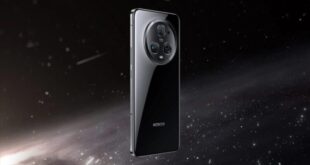Retail owners are throwing away bar codes and turning to an old military technology that’s been around since the World Wars for all their inventory control needs. We’re speaking of RFID tags, which use a simple and elegant technology that was once employed by the Allied powers to identify their own planes from enemy planes.
The technology is radio frequency identification technology. The RFID tags used today work similar to how a radio signal was sent from a plane to a transponder that woke up and either reflected the signal back or broadcast it.
Militaries around the world still used RFID to identify equipment or weaponry, keep track of military supplies, and so on. But it’s in retail that we’re seeing a boost in the use of RFID in innovative ways.
How Do RFID Tags Work?
A number of companies have adopted RFID inventory management to save labour costs, such as Adidas, Zara, H&M, Levi’s, Ralph Lauren, Nike, and others. The technology uses electromagnetic fields to identify and track tags attached to apparel and other objects.
The RFID System Consists Of Four Key Components To Work:
- A tag that consists of a compact radio transponder that, on receiving a signal, sends out a different signal in response. Hard or soft tags are programmable at high frequency and ultra-high frequency, to be fixed to products
- Long and short-range readers and antennae for range and power
- Supporting software or services that can encode tags and process RFID data
- Testing and certification software to test tag inlays for retail uses
The transponder in the tag is activated by an electromagnetic pulse from an RFID reader nearby. Tags may be active or passive. Active tags use a battery to emit a signal of their own constantly. Passive tags have no internal power source and rely on the electromagnetic energy from the RFID reader.
What’s great about RFID in retail as compared to bar-codes or QR codes is the fact that RFID readers don’t need to be within line of sight of the tags. In other words, the tags can be easily embedded in the object that’s being tracked. It’s easy to imagine how this will prove advantageous in the warehouse and retail store.
But there are more use cases of RFID:
- For expedited checkout in shops, to prevent theft
- Implanting in pets and livestock for tracking
- Tagging pharma through the warehouse
- Tagging automobile to track parts progress through the assembly line
Why Do Retailers Love RFID?
What makes RFID so wonderful in retail is its ability to be used in new and innovative ways. There’s not been a lot of change in the technology itself since RFID first began to be used. But some developments in recent years have made it more attractive to retail organisations in particular.
High accuracy: For one, the capabilities of RFID have dramatically improved, with read accuracy having doubled since its early days. This is relevant to cases where you have a large number of items. If you have 100 items in a space, how many of these can the RFID reader read? With active tags, the read accuracy is usually 100%.
With passive tags, there may be some interference from metals, liquids, and some chemicals in the vicinity. So you may be able to read all the RFID-tagged clothing but not all the bottles of spring water in the center of the pallet where they’re stored.
Accuracy may be read accuracy or location accuracy. If the RFID tag is within range of the reader, the reader will record and report the tag’s information. Passive tags only tell you that a tag is in the reader’s field. Active tags can tell you there’s an item within a larger range of a reader. Some real-time location systems can triangulate on a tag and tell you where it is within 10 feet.
High ranges: The ranges that readers and tags can achieve have also increased several times in recent years. These days, far-range ultra-high frequency (UHF) RFID tags can offer a range anywhere from 12 m with a passive tag to 100 m with an active tag.
Shopkeepers don’t have to spend hours every night pulling out every object for inventorying. With a higher range of RFID tags comes the ability to reach awkward or far corners of the warehouse with the RFID reader without having to pull out the rolling staircase.
McKinsey believes that the post-Covid world will see RFID unlock up to 5 percent top-line growth with better stockout management and reduction in shrinkage. McKinsey also predicts RFID will help retailers achieve a 10 to 15% reduction in labour hours related to inventory.
Main Uses Of RFID In Stores
RFID can help with several areas of retail:
- Inventory tracking is the most popular use of RFID so far, with automated cycle counting, better replenishment planning, and accurate product location information
- The use of RFID in-store operations is in its nascent stages but gaining steam. This includes uses like automated asset protection, automated pick or restock notifications, and accurate self-checkout.
- RFID in customer experience, such as personalised recommendations and triggered digital experiences, is in its infancy.
Why Is RFID Suddenly Important?
RFID asset tracking is all of a sudden playing a big role in retail. This may be because shopping is fast becoming by retailers. During Covid-19, retail was online. In the post-Covid world, more retailers are shifting their sales to offline channels, especially curbside pickups, and other clicks-to-bricks systems. Stores continue to be the most profitable fulfillment channel for many retailers, and retailers are doing what they can to drive customers to their physical locations in new ways.
So retailers are starting to think more about providing a smoother shopping experience that is seamless from end to end. RFID in retail has blown up because the technology perfectly fits the need of the moment for more data-driven, omnichannel, accurate customer-driven solutions.
Final thoughts
The average cost of an RFID tag has fallen about eighty percent, and prices of RFID readers have also dropped by nearly half. Even the costs of RFID printers for tags have fallen, making it feasible for small businesses to use RFID. Modern RFID solutions have been identified as having the power to boost revenue, lower costs and improve store economics.
Many players are carrying out more research into RFID, so there’s likely to be more improvements in the near future. Meanwhile, we can continue to see innovative uses in retail, such as in contactless checkout
 HammBurg Be informed with latest news, reviews, entertainment, lifestyle tips, and much more.
HammBurg Be informed with latest news, reviews, entertainment, lifestyle tips, and much more.




